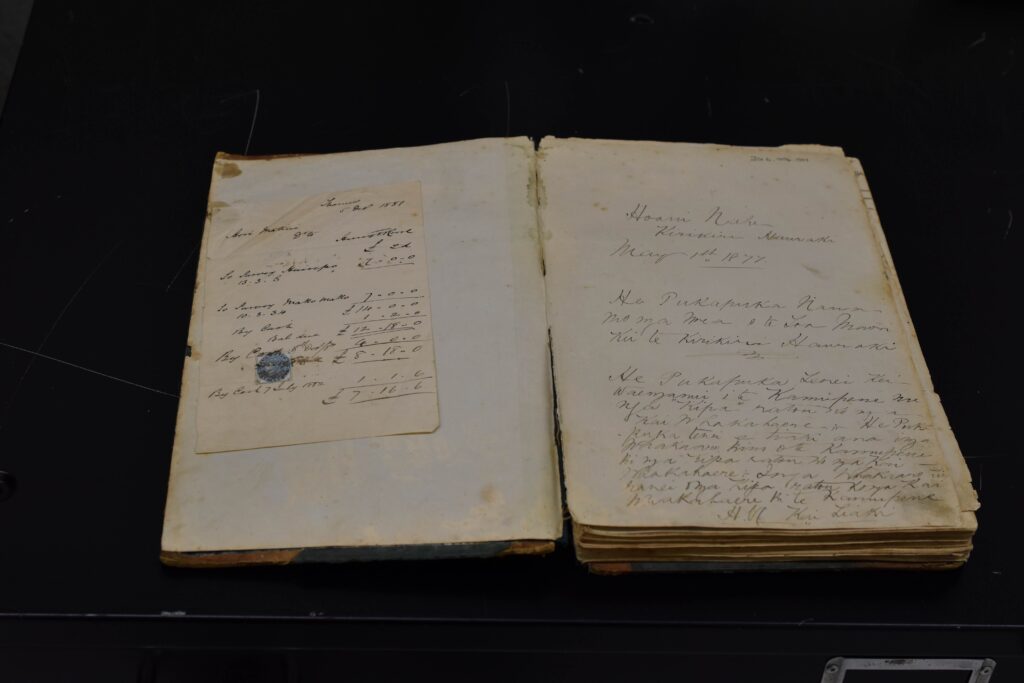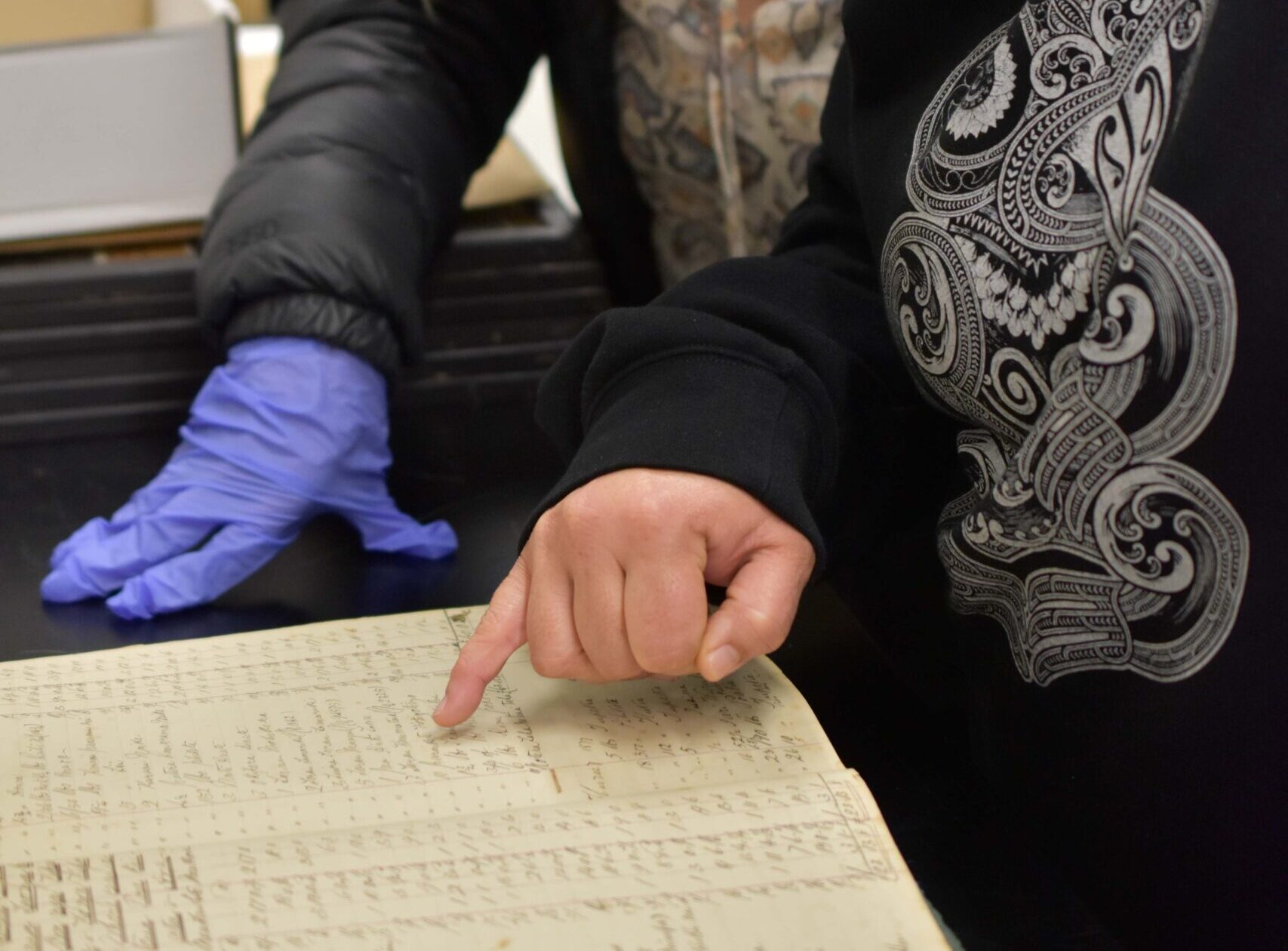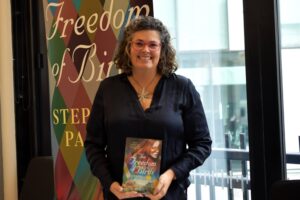A rare find at the Treasury Research and Archive centre will receive professional preservation treatment following a grant from National Services Te Paerangi.
The taonga or treasure in question is a logbook from a general goods store, dated 1877. What makes it special is its contents – the book is written entirely in te reo Māori.
“A lot of this job for us as staff was actually just going into the archive and having a look at what was in there, and we happened across the ledger,” Treasury trustee and collection digitiser Lise Cook said.
“And obviously because I’m Māori and a te reo Māori speaker, it piqued my interest because I’d never seen anything like it before.”

The writer of the fragile ledger, Hoani Nahe of Ngāti Maru, was from the defunct town of Kirikiri, situated where Kōpū now lies. Despite speaking no English, he was a prominent politician, becoming a minister in Governor Grey’s administration and serving on the Native Affairs Committee, which heard petitions on Māori matters. He was also a keen historian of his peoples’ culture, collecting as many Māori traditions and genealogies as he could.
Now, Hoani’s logbook is an item of history too.
“For me, the te reo Māori contained within the book is so different from the te reo Māori we speak today, it was actually hard for me to understand,” Lise said.
“It’s an ever-evolving language.”

Lise and fellow archivist Kaa Te Uruti said finding the book was exciting, and they were thrilled to see their culture represented in the archive in such a powerful way.
“It’s just a really cool snapshot of time … what people were eating, what people were buying, how much things cost,” Lise said.
“They sold everything from flour, salt, sugar … I’m pretty sure that I saw sheep and stuff in there. It’s hard to tell until we get it definitely into a condition where we can digitise it and send it off to someone who’s got better reo than me and can read that writing.”
The book’s disintegrating binding will now be conserved by a specialist conservator, to allow the text to be handled safely.
“For us as an archive, the first step is to just get it into a condition where there’s gonna be no more damage to it,” Lise said.
“[We’ve] taken a few pics just to show people but other than that it stays in its box.”
By ALICE PARMINTER, Public Interest Journalism funded by NZ on Air





